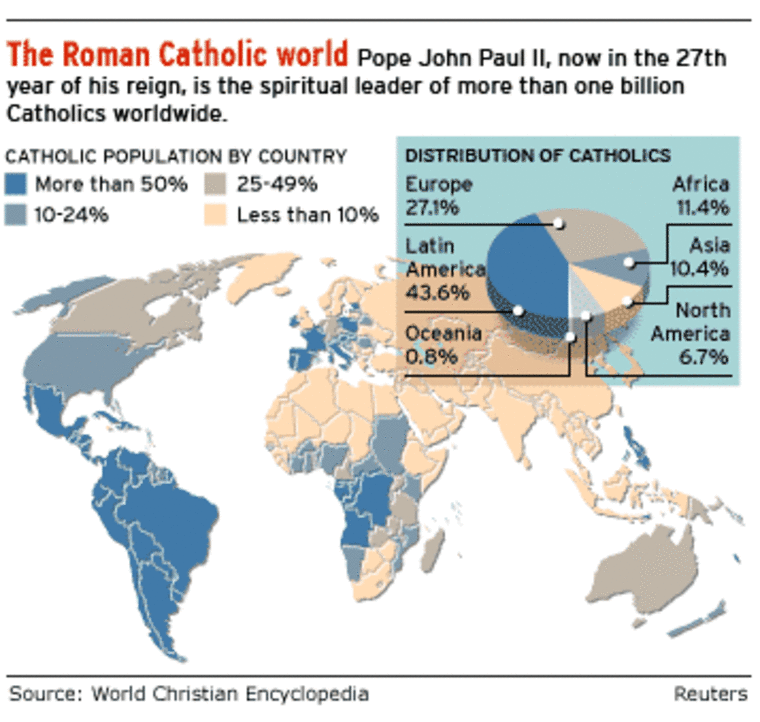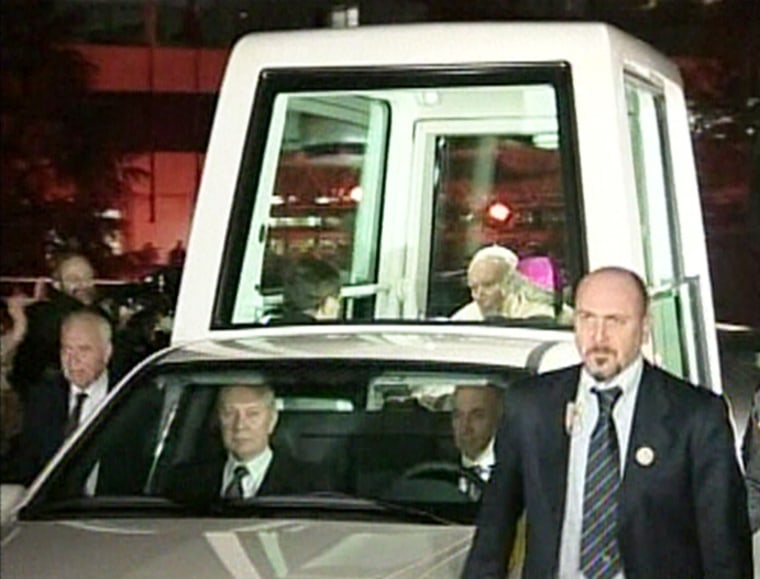At “high noon” in Rome on Thursday, Vatican spokesman Joaquin Navarro-Valls broke the siege waged by the ragtag army of TV, radio and print reporters at the gates of Rome’s Gemelli hospital: “The laryngo-tracheitis which prompted the Holy Father’s hospitalization has healed. The pope will return to the Vatican today.”
The elated media mob rushed to report the good news, then rejoiced with their colleagues in the cold and wind-whipped hospital parking lot — they could all go home too!
Once again the end seemed near, once again it was not to be. Over and over, Pope John Paul II has led the public and the press to the brink of his personal destiny only to pull back at the last minute with an ironic glint in his eyes that seems to say, “not quite!”
‘Sunset of papacy’ will continue
His physical demise has been so prolonged that the so-called “sunset of his papacy” is about to become as long as its heyday. Indeed, the first rumblings of papal succession began to stir in 1992 when the pope had to undergo surgery for a large tumor in his intestine. That growth proved to be benign but it started the media horserace, and top ten lists of possible successors began to appear in major news publications.
Thirteen years have passed since then and the octogenarian Pole continues to defy his doctors and his critics. His Parkinson’s ravaged muscles tremble mercilessly, but his shaking fingers disguise an iron grip on life, and a sharp mental grip on reality.
Everyone who meets with Pope John Paul II in recent times comes away impressed and somewhat surprised by his presence of mind, engaging conversation, and cogent questions on the subject at hand. They admit that he listens more and talks less but no one says he’s “out of it.”
Yet critics say he’s no longer capable of running the church and the din for his resignation is growing. The resignation issue flared up this week with unprecedented comments from the number-two man in the Catholic hierarchy, Secretary of State Cardinal Sodano.
A staunch “company man,” Sodano has always dismissed talk of resignation outright, but this week he responded to reporters that “it is a matter of conscience for the pope, who will do what he sees fit.” That quote alone was enough to unleash a torrent of ink and papal punditry, but the wave of speculation drowned out another quote from the same interview in which Sodano said he hoped John Paul would live another seven years, to surpass the longest papacy in history of Pius IX that lasted 32 years.
Resignation a thorny issue for church
Papal resignation is a very thorny issue for the church. The last pope to resign was Celestine V more than 700 years ago. Historians point to several more resignations before that one too, but the social context of those papacies can’t be compared to this modern age of instant mass communication and a church membership in excess of a billion people.
The church sees the papacy as a mission from God, not as a leadership office elected by men. The mission is to be Christ’s representative on earth, his “vicar,” and the mission is for life. Because Christianity and Catholicism believe that God’s will must be done and human will must be suborned to it, the pope’s exercise of his own will to quit would be a denial of God’s will.
John Paul II believes this completely and is determined to see it through.
From that premise the resignation debate turns to the issue of incapacitation, and the functional paralysis for which church law does not have an overriding mechanism because of the supreme authority of the pontiff.
Since canon law does not contain measures for the removal of an incapacitated pope, only an insane or malevolent one, the question that’s being asked is “where do you draw the line past which the pope is considered to be unable to fulfill his duties?”
John Paul’s biggest critics say that line was crossed years ago and the church is being run for him by his aides. Despite the fact that he maintains a busy daily schedule of audiences with bishops, cardinals, department heads and foreign leaders, there is a definitely a small inner circle that is controlling who gets access to him and what he does and doesn’t hear about.
A younger and stronger John Paul often ran roughshod over his aides and exerted his will in unexpected ways that made it much harder for his aides to restrict access or information. But ultimately even healthy world leaders, like U.S. presidents and British prime ministers, live lives scheduled by their handlers. In that respect the papacy is no different.

Can faithful maintain trust?
The key difference in this comparison comes down to the ability to communicate. This pope was an awesome communicator in his prime. Strong voiced, dramatic, passionate, convincing and charismatic. Now the motor-muscular ravages of Parkinson’s disease have stripped his lips of elocution and his lungs of the breath to get his words out.
Catholics accepted a pope who couldn’t walk, and with sadness even adjusted to a pope whose face could no longer emote. But now the fateful acceptance that could be at hand is of a pope who cannot talk.
Insiders say the church can survive anything, and would survive that too, but will the faithful around the world be able to trust the pronouncements of a pope who can’t speak? Will catholics accept a pope that can only wave from his window? The months ahead are bound to tell us.

